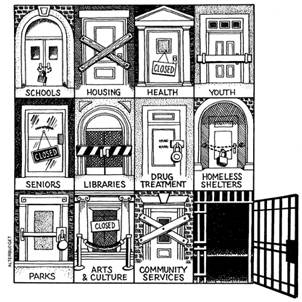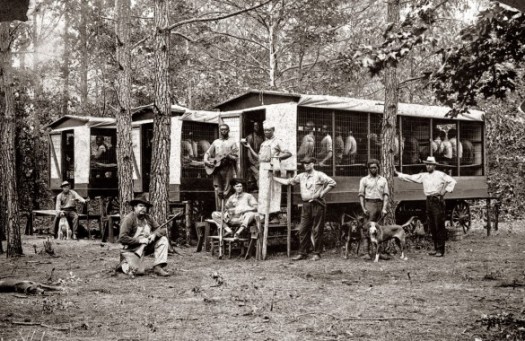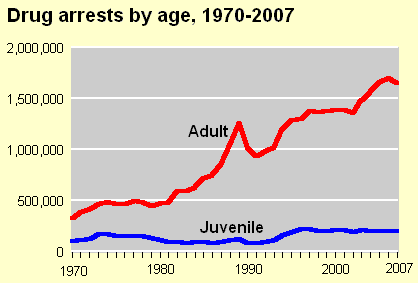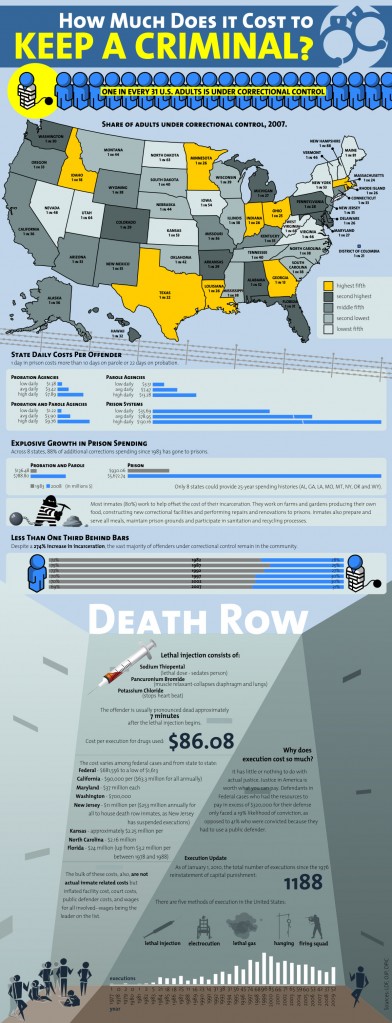Something needs to be said…about Rosa Parks…other than her feet…were tired…Lots of people…on that bus…and many before…and since…had tired feet…lots of people…still do…they just don’t know…where to plant them… [From Harvest (for Rosa Parks) by Nikki Giovanni]
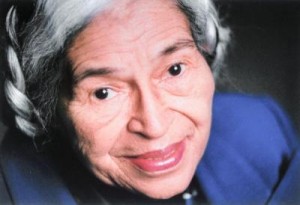
Chances are that most people who read this will have heard the name ‘Rosa Parks.’ She is remembered for her courageous refusal to give up her seat on a Montgomery bus in 1955. This act of resistance sparked the Montgomery bus boycott which launched a little known minister named Martin Luther King Jr. into national attention and prominence.
Yet Mrs. Parks’s life is misunderstood as is her over 60 years of activism. Chances are that if you know something about Mrs. Parks, you may have heard that the reason she refused to give up her seat was because “her feet were tired.” This mythology or urban legend has been perpetuated by politicians and others over the years as a way to de-radicalize the movement for black freedom in the U.S.
Interestingly the mythology was also abetted by organizers of the boycott themselves who wanted to have a “poster child” for the movement who would be beyond reproach. Prior to Mrs. Parks, 15 year old Claudette Colvin as well as other Montgomery women had refused to give up their seats and were subsequently jailed. However movement leaders worried about their backgrounds and decided against launching a campaign on their behalf. The concern was that these young women would not engender sufficient public sympathy and outrage. Former Southern Christian Leadership Conference (SCLC) organizer Andrew Young explained: “She was not the first but when she was thrown in jail it said to all of Montgomery that none of us is safe (Theoharis, p.117).”
Downplaying Mrs. Parks’ previous history of organizing and political engagement was seen as important to the movement. By scrubbing her record and downplaying her radicalism, organizers of the boycott were able to portray Mrs. Parks as a non-threatening and more importantly for the time “respectable” black middle-aged woman. Mrs. Parks’ true self had to take a back seat to the mythology.
Mrs. Parks spoke to this herself:
“I didn’t tell anyone my feet were hurting. It was just popular. I suppose because they wanted to give some excuse other than the fact that I didn’t want to be pushed around…And I had been working for a long time…a number of years in fact – to be treated as a human being with dignity not only for myself, but all those who were being mistreated. (Interview of Rosa Parks by John H. Britton for the Civil Rights Documentation Project, September 28, 1967)”
Rosa Louise McCauley was born in 1913 in Alabama. Her grandfather and mother were Garveyites. Marcus Garvey was a black leader who was a believer in black self-defense and self-determination. In fact when Klan violence worsened in Tuskegee Alabama when Rosa was a little girl, her grandfather would sit up all night on his porch with his rifle. In 1932, she married political activist Raymond Parks who was already organizing to free the Scottsboro Boys (I hope to write something about this case in the near future).
Mrs. Parks was a radical, in the best and truest sense of the word. She was a big supporter of Malcolm X and Robert Williams. She eschewed the concept of gradualism. In 1967, she said “I don’t believe in gradualism or that whatever should be done for the better should take forever to do.” Mrs. Parks had been an activist for two decades before the bus boycott. She had been the secretary of her NAACP chapter and was considered its best investigator. Below is an example of the type of cases that Ms. Parks investigated over 10 years before the Montgomery Bus Boycott:
In 1944 Taylor, a 24-year-old mother and sharecropper, was walking home from an evening of singing and praying at the Rock Hill Holiness Church in Abbeville, Ala., when she was kidnapped by seven white men with shotguns and knives, raped and left for dead.
The Montgomery branch of the NAACP dispatched its best investigator and organizer, Rosa Parks — yes, Rosa Parks — to Abbeville. Despite a confession, corroborating testimony, affidavits from at least three eyewitnesses and overwhelming evidence, two all-white, all-male grand juries refused to issue any indictments.
After this incident, Mrs. Parks helped form the Committee for Equal Justice for Mrs. Recy Taylor. According to Jeanne Theoharis (2009):
“Using the networks built through the Scottsboro case, the committee reached out to labor unions, African American groups and women’s organizations to draw attention to the case and to pressure Governor Chancey Sparks to convene a special grand jury.”
Another case that animated Mrs. Parks was that of Jeremiah Reeves, a 16 year old black young man who was having an affair with a white woman.
“When a neighbor discovered the couple, the white woman cried rape. The Montgomery NAACP worked for years to free Reeves. Parks personally corresponded with him and helped get his poetry published in the Birmingham World. But on March 28, 1958, Reeves was executed. ‘Sometimes it was very difficult to keep going,’ Parks admitted, ‘when all our work seemed to be in vain.’ (Theoharis, p. 120).”
Mrs. Parks called her own arrest on the Montgomery bus in 1955 “one of the worst days of my life.” She explained: “There were other people on the bus whom I knew. But when I was arrested, not one of them came to my defense. I felt very much alone.” Mrs. Parks was organizing for the rights of black people in the criminal legal system even while she herself was jailed.
“One of the women in her cell had been in jail for nearly two months. The woman, who had picked up a hatchet against her boyfriend after he struck her, had no money to post bail and no way to let her family know where she was. Parks smuggled out a piece of paper with the woman’s brother’s phone number. ‘The first thing I did the morning after I went to jail,’ Parks recalled, ‘was to call the number the woman in the cell with me had written down on that crumpled piece of paper.’ A few days later, she saw the woman on the street, out of jail and looking much better. (Theoharis, p.124)”
For those who are interested in better understanding what Mrs. Parks and her family endured during the Bus Boycott, I strongly recommend Douglas Brinkley’s book, Rosa Parks: A Life. It chronicles the death threats, lost jobs and income, and ultimately the jealousy of some of the black ministers towards Mrs. Parks. Ultimately, she and her family moved to Detroit after the Boycott ended in 1957.
In Detroit, Mrs. Parks continued her activism on behalf of human rights. Particularly interesting to me is her work in addressing the case of Joanne Little. Mrs. Parks was one of the founders of the Joanne Little Defense Committee in Detroit. “The mission statement of the Detroit organization affirmed the right of women to defend themselves against sexual attackers (Theoharis, p.131)”
According to Jeanne Theoharis (2009):
“Parks also campaigned vigorously on behalf of Gary Tyler, a sixteen-year old black teenager who had been wrongfully convicted of killing a thirteen-year old white boy. The youngest person ever given the death penalty, Tyler was riding a school bus when it was attacked by a white mob angry that schools were being desegregated in Louisiana. Police boarded the bus and pulled Tyler off for allegedly shooting a boy outside the bus, even though no gun was found on the bus. Parks gave the keynote address at a packed meeting in Detroit in June 1976 on behalf of Tyler and worked to see his conviction overturned. However, Tyler was never freed (pp.131-132).”
I want to conclude with an anecdote that I believe encapsulates how Mrs. Parks saw and lived in the world. In September 1994, an 81 year old Rosa Parks was mugged and beaten by a black man in Detroit. Here is how Bob Herbert of the New York Times commented on the incident:
Early last week came the astonishing news that a black man had put his hands on Rosa Parks. Some moral cipher, reeking of alcohol, had invaded the home of the 81-year-old mother of the civil rights movement, had pummeled her until she gave up her money and then fled, leaving her bruised and shaken but no less stoic and dignified than in 1955 when a bus driver in Montgomery, Ala., told her to get up and give her seat to a white person and she softly replied no, there will be no more of that.
Notice even in Herbert’s column that he calls Mrs. Parks “the mother of civil rights movement,” a title she never asked for and didn’t feel she really embodied. Anyway I digress… Herbert went on to write:
We are in the dark night of the post-civil rights era. The wars against segregation have been won, but we are lost. With the violence and degradation into which so many of our people have fallen, we have disgraced the legacy of Rosa Parks.
Instead of succumbing to hopelessness and rage, Mrs. Parks decided to take a different approach. She asked that “people not read too much into the attack” and prayed for the man “and the conditions that have made him this way.” As Jeanne Theoharis writes, “To the end, Parks remained focused on changing the conditions that limited black people’s ability to flourish (p.133).” I would add that Parks was a practitioner and proponent of transformative justice.
I will end as I began with the words of the amazing Nikki Giovanni from her poem “Harvest:”
They always tell us one…person doesn’t make any difference…but it seems to me…something…should be done…In all these years…it’s strange…but maybe not…nobody asks…about my life…If I have children…why I moved to Detroit…what I think…about what we tried…to do…somehow…you want to say things…are better…somehow…they are…not in many ways…People…older people…are afraid…younger people…are too…I really don’t know…where it will end…Our people…can break…your heart…so can other…people…I just think…it makes a difference…what one person does…young people forget that…what one person does…makes a difference.
